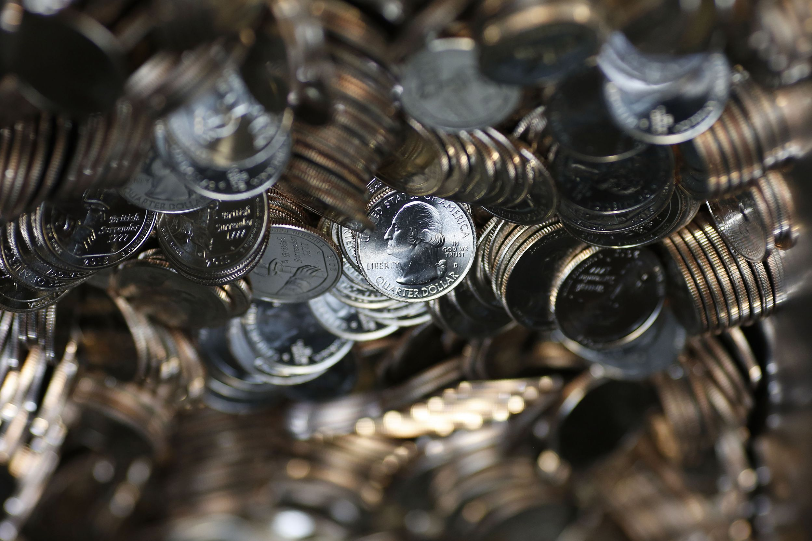Tag: coins
Why coins are disappearing from cash registers across the country
At fast-food restaurants, supermarkets, banks and other businesses across the country where cash normally changes hands, customers are being warned that coins are in short supply.
Scott Talan found that out last weekend when he used a Starbucks drive-thru in Virginia and was met by a handwritten sign that read, “Due to the national coin shortage, we can only accept exact change or electronic payment at this time.”
He thought it was a prank.
“I was going to email the store manager or Starbucks headquarters because it didn’t look official,” said Talan, an assistant professor at American University in Washington. “It’s all very strange and fitting of the times we’re in.”
Starbucks did not immediately respond to a request for comment Wednesday.
The apparent absence of enough coins in the nation’s marketplace has so alarmed the federal government that last month the Federal Reserve established a U.S. Coin Task Force to “mitigate the effects of low coin inventories caused by the COVID-19 pandemic.”
The 22 members of the task force were announced Friday, representing government agencies, banks and businesses, and they will meet this month with the goal of sharing recommendations in early August to identify “actionable steps that supply chain participants can take to address the current coin circulation issue.”
Daniel Soques, an assistant professor of economics at the University of North Carolina Wilmington, called the situation a “perfect storm” of circumstances born out of the pandemic, during which businesses that deal heavily in coins, such as laundromats, may have closed, while the fear of getting the coronavirus by touching currency may have spurred people to avoid physical monetary transactions altogether. Coinstar, which operates about 22,000 coin-cashing kiosks nationwide, said volume slowed amid state and city lockdowns. New coin production was also hampered at the U.S. Mint’s production facilities in March and April.
And when the economy started tanking with record losses in the spring, it was enough for some people to “start hoarding coins and hoarding money in general,” Soques said.
Last month, Federal Reserve banks began allocating money from existing coin inventories to banks as a “temporary measure.” As of April, there was nearly $48 billion of coinage in circulation, the Treasury estimated.
The Fed said in a statement that it “is confident that the coin inventory issues will resolve once the economy opens more broadly and the coin supply chain returns to normal circulation patterns,” although it “recognizes that these measures alone will not be enough to resolve near‐term issues.”
Fed Chair Jerome Powell acknowledged at a House Financial Services Committee hearing last month that banks are also suffering through the lack of a “flow of coins.”
“We’re working with the mint to increase supply, and we’re working with the reserve banks to get that supply where it needs to be,” Powell said. “So we think it’s a temporary situation.”
While the Fed has stopped short of labeling it a “coin shortage,” that’s exactly what it is, Soques said.
A dearth of circulating coinage is not unheard of. In 1999, a “penny drought,” presumably caused by people uninterested in using them or stockpiling them in jars, forced some businesses to ask customers for help or to ration the coins.
Today, some businesses are notifying customers that they have no change to give, while others are telling them that they are rounding prices to exact amounts because paper bills are not in short supply. In other cases, businesses are doing only electronic transactions.
But that, too, can be a cause for concern, Soques said.
“While it’s not necessarily a bad thing to move away from physical cash and coins, it will disproportionately hurt the people on the lower end of the financial spectrum,” he said. “They’re the ones who typically don’t have a bank account, so if you move to all-digital, they’re at a disadvantage.”
Article via YahooNews


